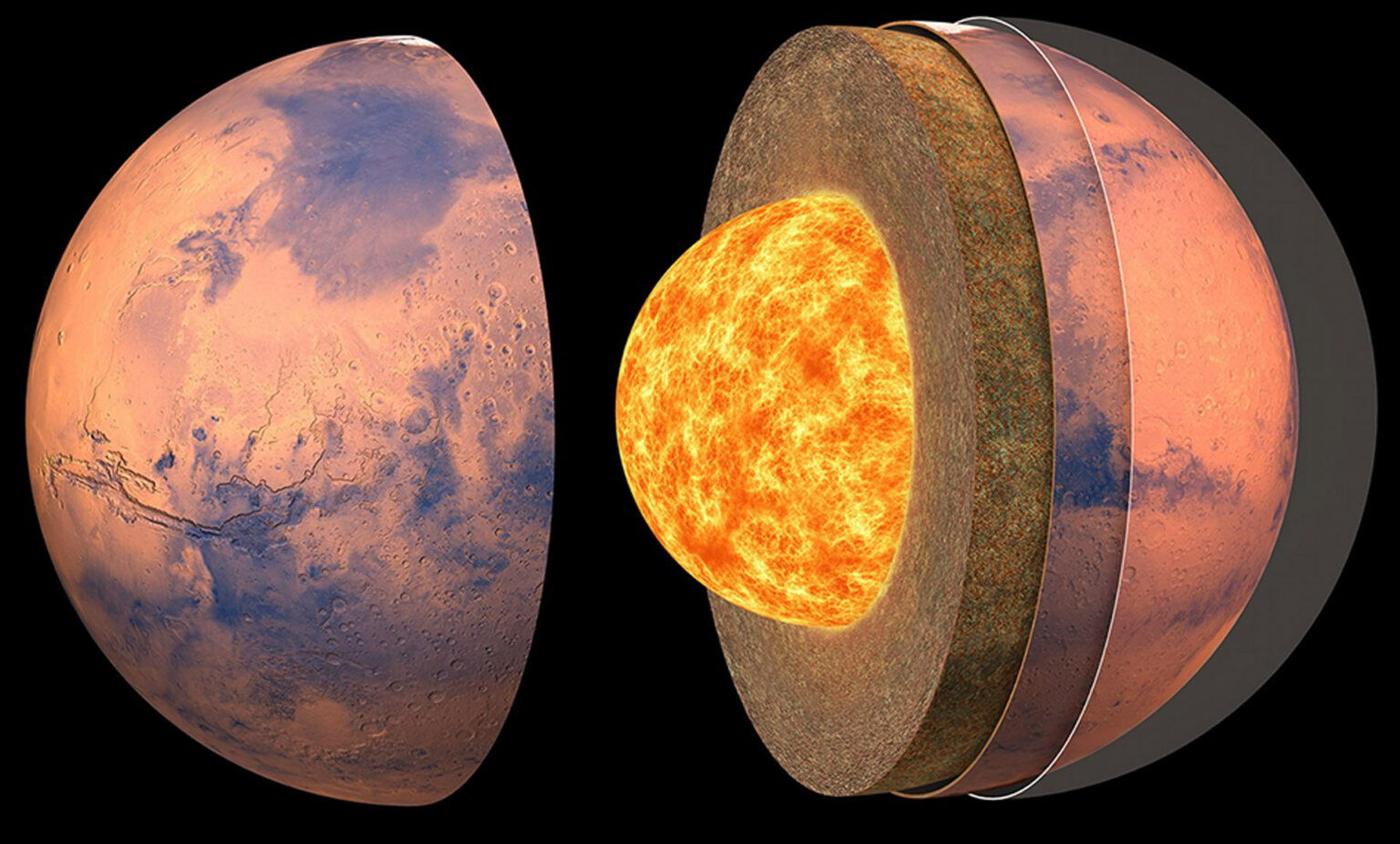There are areas with a high content of silicon in the crust of Mars. This indicates that it is not as simple as it was thought until now. At the same time, it remains an excellent object for studying the past of our own planet.

Mars’s Crust
Mars is the fourth planet of the Solar System. It is much smaller than Earth, so its core cooled down very quickly. As a result, the crust of the planet did not experience such a large-scale melting as the Earth’s. In addition, the atmosphere and hydrosphere of the planet almost disappeared several billion years ago. Consequently, it also did not experience significant erosion.
Therefore, scientists believed that the Martian crust has a very simple structure. It was supposed to consist of only one layer of basalt and be very similar to Earth’s in this respect. Scientists hoped to use it to look into the past of our own planet.
However, the researchers analyzed spectroscopic data collected by the Mars Reconnaissance Orbiter over the Southern Hemisphere of Mars. They found 9 places, such as craters and cracks, in which the mineral feldspar, extremely rich in silicon, is present in large quantities.
Two theories about Mars’s Past
Scientists do not have an unambiguous answer to the question of how the crust of Mars is formed. There are two main theories. According to the first of them, at the beginning of the planet’s existence, its surface was completely covered by an ocean of lava, as it was with the Earth or the Moon.
According to the second, even at the beginning of its existence, Mars did not have sufficient temperature in the bowels and part of the outer layers remained unfused. New research suggests that the second point of view may well be correct.
Scientists used the THEMIS instrument on board the MRO and made sure that rocks with a high content of silicon are very common in the southern regions of Mars. This is indicated by the data of rovers and Martian meteorites.
It seems that volcanic processes on Mars were much more complicated than a simple ocean of basalt lava, once cooled down forever. In addition, they occurred from the very beginning of the existence of the planet, because the studied rocks are the oldest found on it, their age is 4.2 billion years.
According to phys.org
Follow us on Twitter to get the most interesting space news in time
https://twitter.com/ust_magazine

